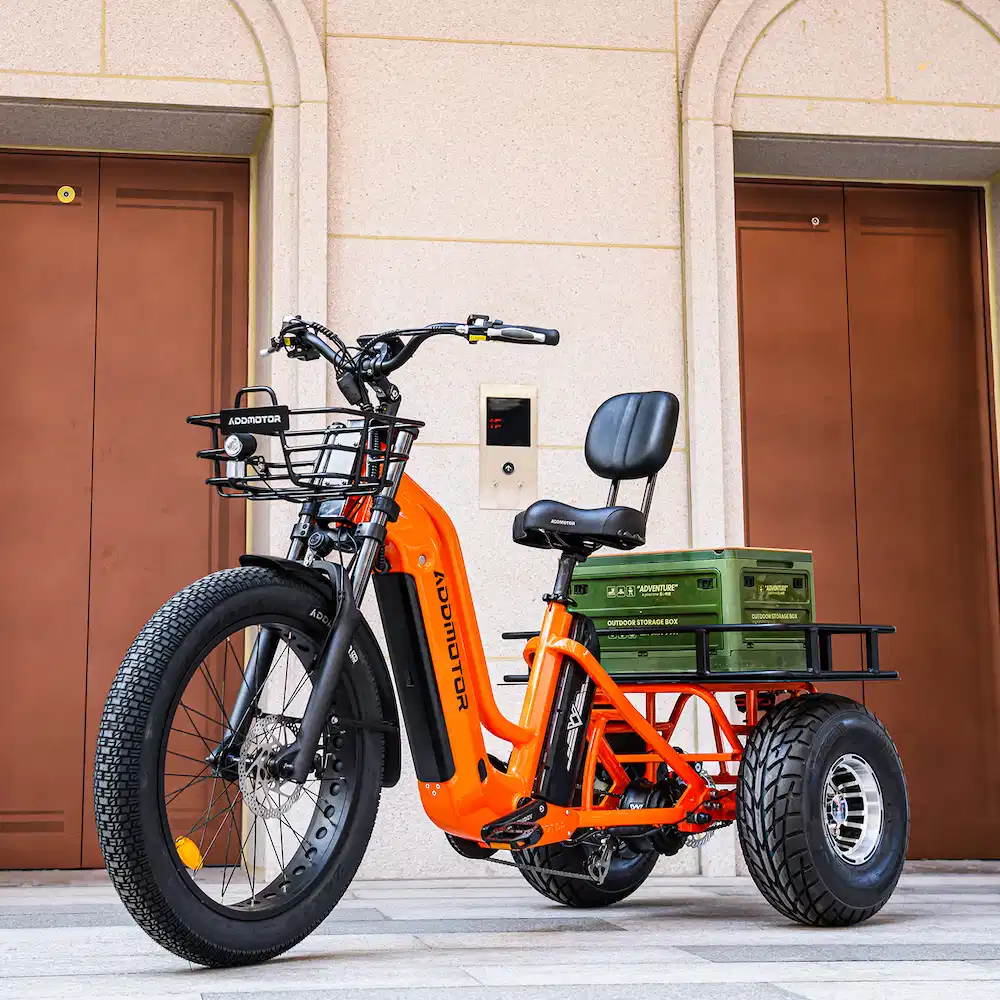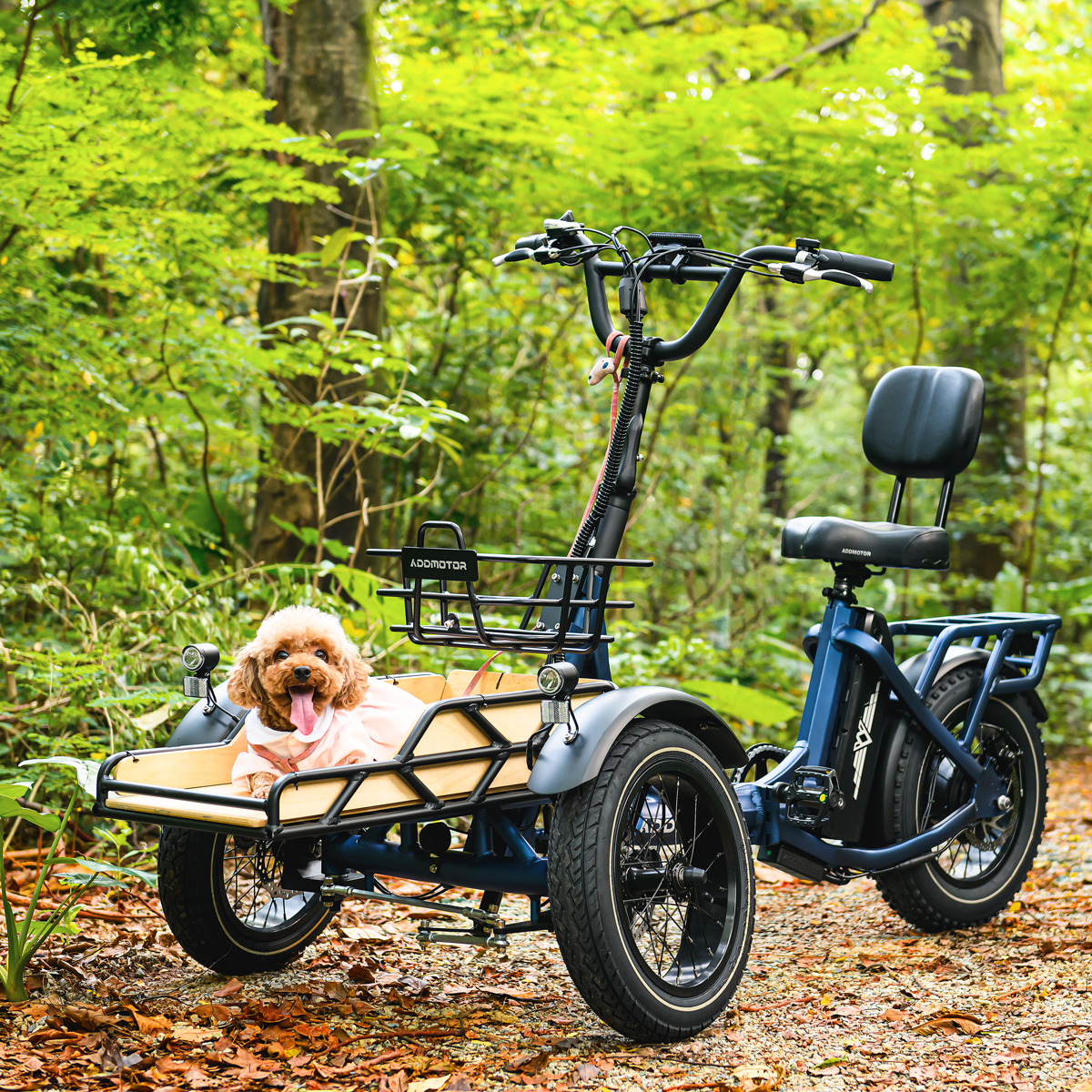ADDTECH | 18650 Lithium Battery
Everything You Should Know about 18650-Lithium-Battery can be found here.
By Addmotor | 22 February 2023 | 0 Comments
_1677056510.jpg)
I. Introduction
The 18650 Lithium-ion battery is a rechargeable battery that has become increasingly popular in the past few years due to its high energy density, long cycle life, and low self-discharge rate. The name derives from the battery’s specific measurements,18 means a diameter of 18mm, 65 means a height of 65mm, and 0 means the battery shape is cylindrical.In this section, we will discuss the working principle, development history, advantages, and applications of the 18650 Lithium battery.
1. Working Principle
The 18650 Lithium-ion battery is a type of rechargeable battery that uses lithium ions to store energy. The battery is made up of three main components: the anode, the cathode, and the electrolyte. When the battery is charged, lithium ions move from the cathode to the anode through the electrolyte. During discharge, the ions move back from the anode to the cathode, producing electrical energy.2. Development History
The 18650 Lithium-ion battery was first introduced in the 1990s by Sony Corporation. It was initially used in small electronic devices such as laptops, camcorders, and digital cameras.At the time, the 18650 battery had a relatively low energy density, limited capacity, and a high cost, which restricted its use to high-end products. However, as the technology improved, the 18650 battery became more affordable and widely available. In the early 2000s, the battery's capacity and energy density increased significantly, making it suitable for use in electric vehicles, power tools, and other high-performance applications. This led to an explosion in demand for the 18650 battery, with sales doubling every year.
Today, the 18650 battery is used in a wide range of applications, from electric bikes and power tools to flashlights, portable electronic devices, and even some medical equipment. The 18650 battery's popularity continues to grow due to its high energy density, long cycle life, and low self-discharge rate, which make it an ideal choice for many applications.
3. Advantages & Applications
One of the main advantages of the 18650 Lithium-ion battery is its high energy density, which means it can store a lot of energy in a small space. This makes it ideal for use in devices where space is limited, such as laptops, smartphones, and other portable electronics.Another advantage of the 18650 Lithium-ion battery is its long cycle life. Unlike other types of rechargeable batteries, such as nickel-cadmium and nickel-metal hydride, the 18650 Lithium-ion battery can be recharged hundreds of times without losing its capacity. The 18650 Lithium-ion battery is also known for its low self-discharge rate, which means it can hold its charge for a long time, making it ideal for use in emergency backup power supplies.
One of the major drivers of the 18650 battery's continued development has been the growth of the electric vehicle industry. Electric vehicles require high-capacity, high-performance batteries that can deliver reliable and consistent power over long periods of time. The 18650 battery's high energy density and long cycle life make it a perfect fit for electric vehicles, helping to drive innovation and improve performance in the sector.
II. Basic 18650 Lithium Battery Terminologies
In this section, we’ll discuss the basics of 18650 lithium battery terminology and explain the differences between capacity, discharge rate, charge rate, continuous discharge rating (CDR), cycle life, cut-off voltage, power circuit module (PCM), and battery management system (BMS).1. Capacity
The capacity of a lithium-ion battery refers to the total amount of energy it can store. Capacity is typically measured in ampere-hours (Ah) or milliamp hours (mAh).The 18650 battery ranges from 2600-3500mAh. A higher capacity means that the battery can store more energy for a given battery size and weight than a lower-capacity model. Higher capacities also tend to be more expensive.
2. Discharge-Rate & Charge-Rate
The maximum rate at which a battery can safely discharge its stored energy is referred to as its discharge rate. This is usually measured in amps (A) or milliamps (mA).The higher the discharge rate, the faster the battery will drain its stored energy when used in an application. Similarly, charge rate refers to the maximum rate at which a battery can be recharged without damaging battery cells or reducing its lifespan.
3. Continuous Discharge Rating (CDR)
The continuous discharge rating (CDR) measures the maximum amount of current that a lithium-ion cell can safely deliver over time without overheating or damaging itself. This rating is expressed in amps or milliamps per cell and will vary depending on the type of cell being used.This rating should never be exceeded when using 18650 lithium batteries for an application, as doing so could cause them to become unstable and even explode due to overheating.
4. Cycle Life
The cycle life of a 18650 lithium-ion battery refers to how many times it can be fully charged and discharged before reaching the end of its lifespan.Typically, these batteries have cycle lives ranging from 500 up to 2000 cycles, depending on their quality and usage conditions.
The number of cycles that a particular cell has left before it reaches the end of life is usually indicated by its internal protection circuit, which monitors remaining capacity levels over time - if this drops below 80%, then it’s likely time for a new cell.
5. Cut-Off Voltage
The cut-off voltage is a crucial parameter for the safe and efficient operation of the 18650 Lithium-ion battery. It refers to the voltage level at which the internal protection circuitry of the battery disconnects load current flow to prevent further draining of the cell's energy stores.Discharging the cell below the cut-off voltage level can lead to irreversible damage, reducing the battery's overall lifespan and performance.
In addition to protecting the battery during use, the cut-off voltage also plays a crucial role in protecting the battery during storage periods between uses, especially in applications such as solar lighting systems, where the battery may remain unused for extended periods.
Discharging the battery below the cut-off voltage level during storage can lead to a complete loss of capacity or even permanent damage.
6. Power Circuit Module (PCM) and Battery Management System (BMS)
To ensure the safe and efficient operation of the 18650 Lithium-ion battery, the battery incorporates several safety features, including the power circuit module (PCM) and the battery management system (BMS).The PCM is installed inside each individual 18650 cells and provides essential safety features such as overcharge and over-discharge protection circuitry, ensuring that the battery is not overcharged or discharged beyond its safe limits.
The PCM also includes balancing currents across all cells within any series-connected packs to prevent any single cell from becoming overly depleted while others remain charged up, leading to potentially dangerous destabilizing effects within large series-connected packs made up of multiple cells, such as those found in many large-scale solar lighting systems.
The BMS is a more comprehensive system that monitors the battery's overall health and performance, including parameters such as temperature, voltage, and current. The BMS also controls the charging and discharging of the battery, ensuring that it operates within its safe limits and prolongs its overall lifespan.
_1677056391.jpg)
III. The Different Comparisons of 18650 Lithium Batteries
With dozens of different variations on the market today, it can be difficult to discern which one is right for your project.In this section, we’ll take a look at three important distinctions between various 18650 lithium batteries: flat top vs. button top, protected vs. unprotected, and PCB-built-in vs. bare cell battery.
1. Flat Top Vs. Button Top Battery
The primary difference between a flat top and a button top battery lies in their physical design; the latter has an extended protrusion at its positive end, while the former does not.Depending on what device they are being used with, one might be more suitable than the other due to size constraints or compatibility requirements. The button top can also provide extra security when inserted into a device as it prevents slipping out easily when compared to the flat top design.
2. Protected Vs. Unprotected Battery
The main factor that sets protected and unprotected batteries apart are safety features. A protected battery will always come with an integrated safety circuit designed to protect against common issues such as overcharging and short-circuiting.An unprotected cell lacks any integrated protection measures; while they may be cheaper upfront, they carry more risk and should only be used by experienced users who know how to safely store and use them.
3. PCB Built-in Vs. Bare Cell Battery
PCB built-in batteries have their own printed circuit boards (PCBs) within the casing that allow for better power distribution, monitoring of current draw, temperature regulation, and improved overall performance.On the other hand, bare cells lack any form of additional electronics within their design; these types are generally best suited for basic applications where additional monitoring or control isn't necessary.
Conclusion
The 18650 Lithium-ion battery has revolutionized the world of portable electronics, electric vehicles, and renewable energy systems. Its high energy density, long cycle life, and low self-discharge rate have made it a popular choice for various applications. From laptops and smartphones to electric cars and bikes, the 18650 Lithium-ion battery has played a critical role in powering modern-day technology.With the rise in popularity of electric vehicles, the 18650 Lithium-ion battery is also becoming increasingly important in powering electric trike. Its compact size, high energy density, and long cycle life make it an ideal choice for powering the electric motors of these vehicles, providing a sustainable and efficient transportation option for the future.
Leave a Reply
Your email address will not be published.Required fields are marked. *
Latest Stories


-(1)_1745999372.webp)

